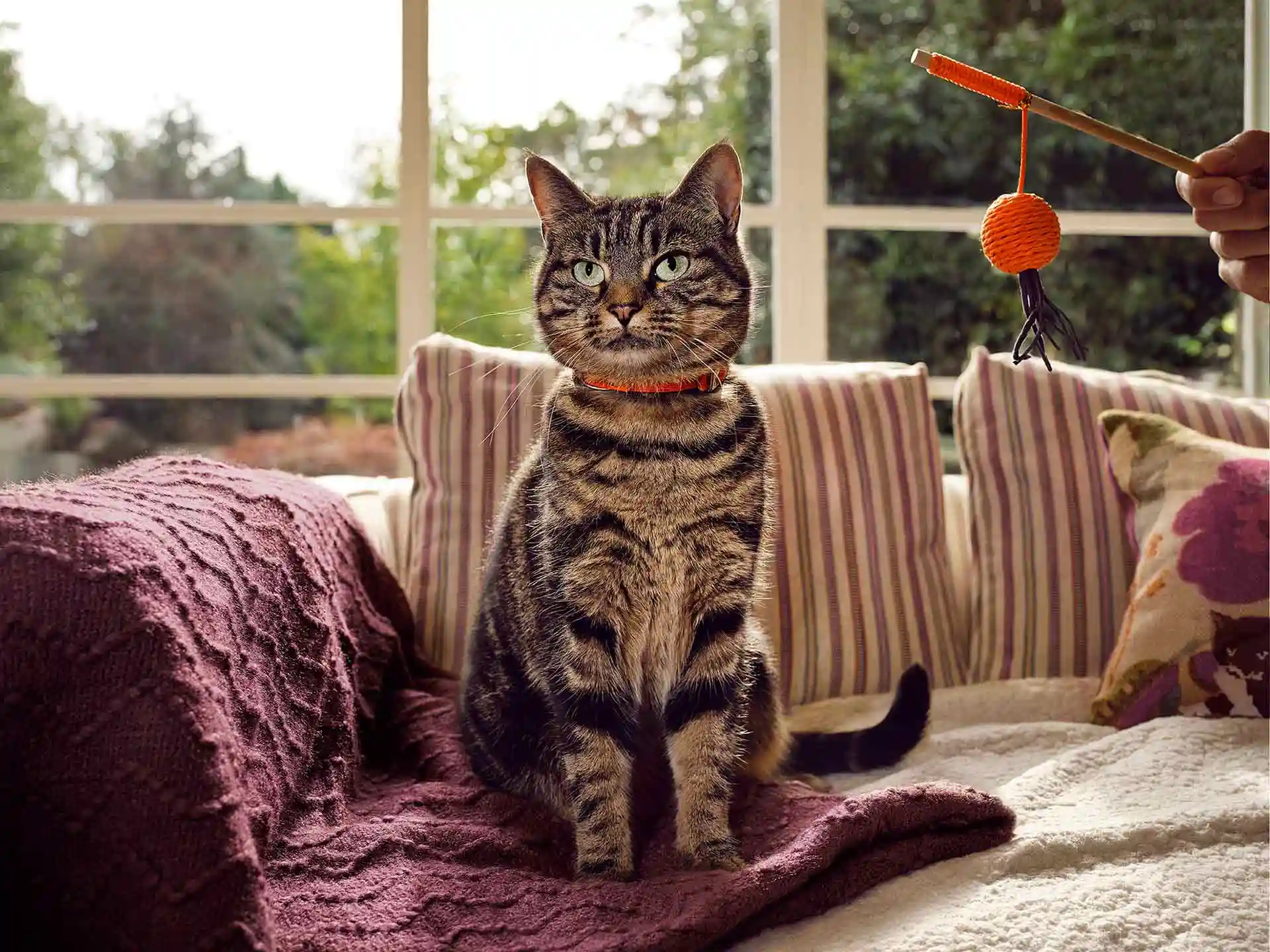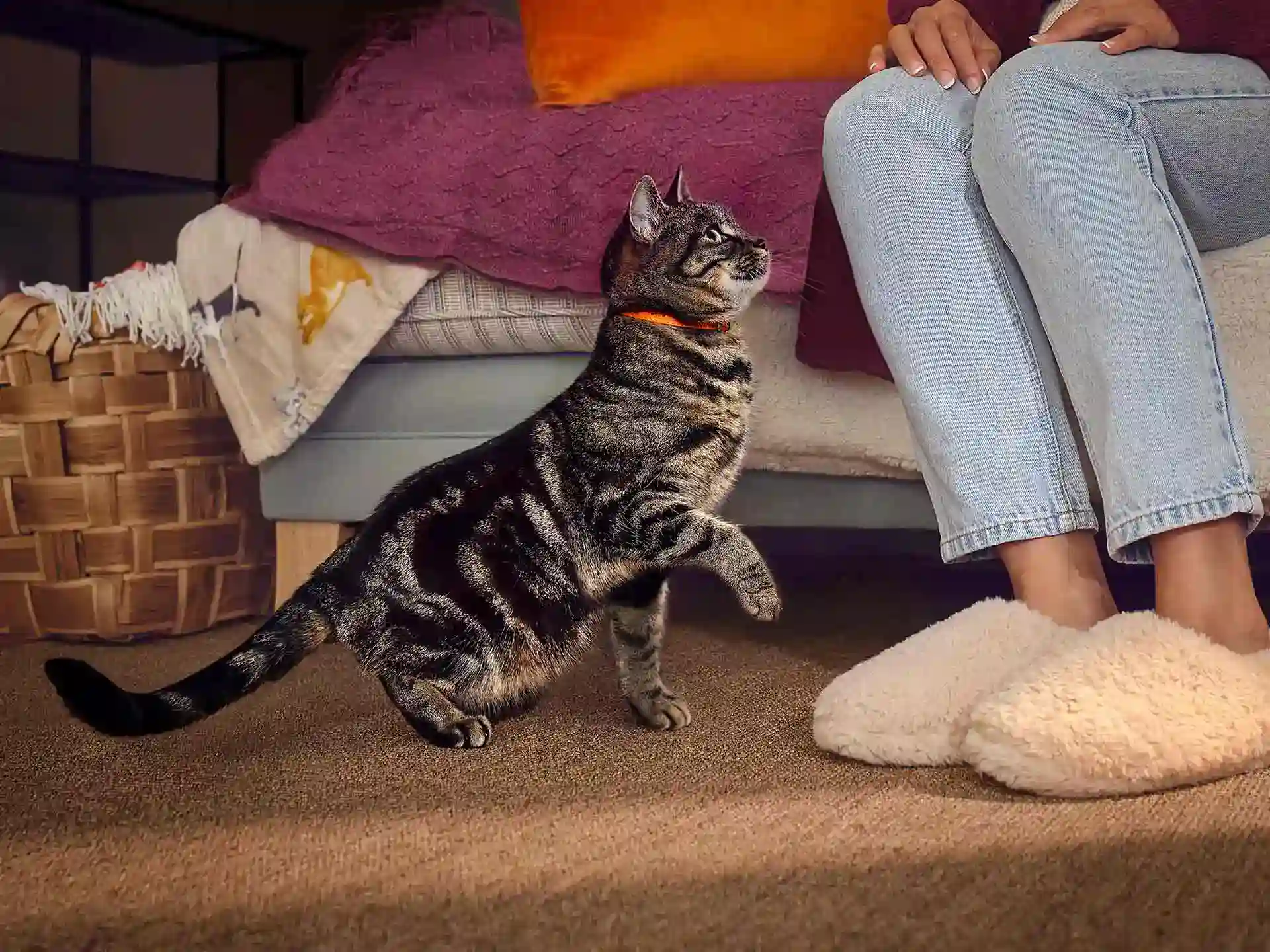Let's check your cat for signs of arthritis pain
Cats usually love to jump, climb and pounce. But maybe you’ve noticed that your cat has become less adventurous. If your cat is spending more time resting or sleeping, or if they're playing less than they used to, it's not necessarily because they're getting older. This change in behaviour may be a sign that you need to take them to the vet.
Take the assessment to check your cat for signs of arthritis and to detect changes in their behaviours, as these could be signs of arthritis pain.

*Please choose all that apply
*Please choose all that apply
Does your cat have any of these problems?
Thinking about your cat’s activities and behaviours, have you recently observed any of the following?
Check all that apply.
Physical signs
Behavioural signs
Give your cat a better quality of life
Fill in the details below to get your own personalised report to find out if your cat could be showing signs of arthritis pain and most importantly, what you should do next.
Please tell us about your cat
What is your cat’s name?
How old is your cat?
Enter your email address *
Please insert your email address
Please accept the terms and conditions below
Your cat is showing some signs of arthritis and this may be painful for them.
This may come as a surprise, because cats are good at hiding signs of pain – however, arthritis is a common chronic disease amongst cats, affecting up to 40%1 of cats globally. We recommend that you take your cat to your vet for a full assessment and to seek advice to help them maximise their quality of life.
We've emailed you a copy of your personalised report, which you can share with your vet. This will help them better understand your cat’s activity levels and behaviours at home. Ideally, you could also provide videos of your cat’s behaviour. This will be helpful because sometimes, cats do not show certain behaviours in a veterinary clinic. Your vet will be able to advise how to help reduce your cat’s pain, and help them feel more comfortable.
1. E.M. Hardie, S.C Roe, F.R Martin. Radiographic evidence of degenerative joint disease in geriatric cats: 100 cases (1994-1997). J Am Vet Med Assoc, 220 (5) (2002)

's Report
Zoetis arthritis report
Your cat's symptoms
Physical signs
Behavioural signs
What to discuss at your veterinarian checkup:
If your cat has been injured
Any injury or dislocation affecting your cat’s joints should be mentioned, as it can increase your cat’s risk of developing arthritis.
Your cat’s diet
Being overweight might worsen arthritis pain and make your cat’s movement uncomfortable. Your vet can recommend a diet for your cat that will help them to maintain an optimum weight.
Any medication or supplements your cat is taking for arthritis pain
With advancing medical treatments and environmental changes, your vet will advise on how you can maximise your cat’s quality of life. Be sure that you mention any medication or supplements your cat might be taking so that the safest possible treatment is given.
Good news.
Based on your answers, your cat doesn’t appear to be showing signs of arthritis.

What can I do now to slow or help prevent arthritis?
Pay attention to your cat’s behaviour
Cats love climbing and jumping up onto high places, so that they can survey the surrounding areas. If your cat starts being content staying closer to the ground or rests more than usual, you may be seeing some signs of arthritis.
Ensure that your cat’s diet is healthy
Being overweight can lead to arthritis, so your cat needs to have a healthy diet that can help to maintain an optimum weight.
Visit the vet regularly
It’s important that your cat has regular full assessments and that you share with the vet any signs you may notice. With advancing medical therapies and other environmental changes you can make, your vet will advise on how you can maximise your cat’s quality of life.
Do you have a dog?
Check the health and wellness of your dog here >>


